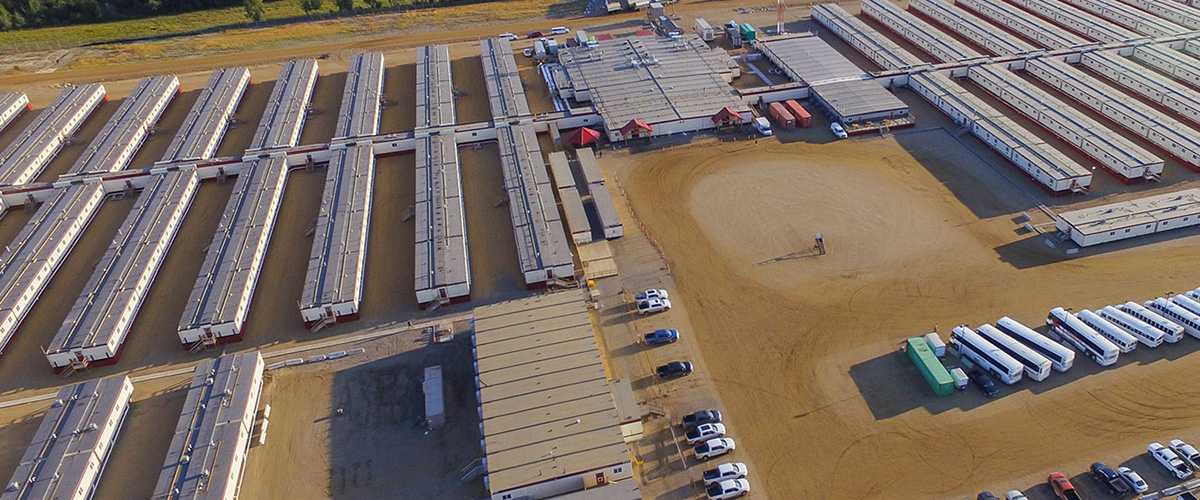
Social impacts of LandSea work camp in Britannia Beach need to be assessed
211 signed. Let's get to 250.
URGENT! Please send a personalized letter to share your concerns about the LandSea work camp proposed for Britannia Beach
LandSea is proposing a temporary work camp in Britannia Beach, to house ~500 construction workers for Woodfibre LNG and the FortisBC Eagle Mountain pipeline.
The problem is that both Woodfibre LNG and FortisBC stated in their environmental assessment (EA) applications that no work camps would be required for their respective projects, so the social impacts of a work camp in Britannia Beach have not been properly assessed.
My Sea to Sky has written a letter to the BC Environmental Assessment office, asking them to suspend the environmental assessment certificates for Woodfibre LNG and the FortisBC Eagle Mountain pipeline until the proposed LandSea work camp is submitted as an amendment to the EA for both projects, and the economic and social impacts are properly assessed. READ THE LETTER
Next week, the Squamish Lillooet Regional District (SLRD) will be deciding whether or not to approve the temporary use permit for the LandSea workcamp. My Sea to Sky has applied as a delegation to ask the SLRD board NOT to approve the temporary use permit until the social impacts of a workcamp in Britannia Beach have been assessed by the BC EAO, with input from the public.
We need your voices to help amplify our message. Please take a moment to send a letter to the SLRD asking them not to approve the LandSea workcamp at Britannia Beach. You can send a letter using the sample text provided, but please take a moment to personalize it - personal letters are much more powerful.
Key talking points:
Do you live in Britannia Beach, Squamish, or Whistler? If so, tell them you are a resident and share your concerns.
Ask questions! How will a 500-person work camp impact the communities of Britannia Beach, Squamish, and other nearby communities? What will the impacts on social services be? How will the work camp increase traffic and traffic accidents on the Sea to Sky highway? We need to evaluate all of these potential social impacts before the LandSea workcamp is approved.
What social impacts are you specifically concerned about? See examples of known social impacts from work camps and references below.
Impacts of workers camps:
Studies during construction of similar industrial projects with large numbers of temporary construction workers have resulted in:
- increased number of workplace accidents.
- increased substance abuse and misuse.
- increased traffic accidents and collisions.
- increased rate of violent crime, including sexual assault and sexualized violence, and increased domestic violence.
- increased violence against Indigenous women and children.
- increased rates of prostitution.
- increased demands on hospitals, counseling, police, and ambulance services, which results in reduced service capacity for residents.
- waste disposal issues.
References:
Amnesty International (2016) Out of Sight, Out of Mind: Gender, Indigenous Rights, and Energy Development in Northeast British Columbia, Canada.
Kevin Maimann (2018) Link between rural work camps and violence against women is real, researchers say. The Star Edmonton, published 2018-12-04
Northern Health (2018) Health and Safety During the Opioid Overdose Emergency:Northern Health’s Recommendations for Industrial Camps. Office of Health and Resource Development. Version 1.5. August 2018.
Northern Health (2017) Communicable Disease Control Plan Best Management Guide for Industrial Camps. Office of Health and Resource Development. Version 2.2. July 2017.
Secwepemcul'ecw Assembly (2019) What are man camps? Accessed 2019-04-20
"“Camp culture” has been reported to exacerbate isolation, mental illness, drug and alcohol abuse, violence, misogyny, and racism among the men living there. Away from family, friends, and social supports, these men face stressful, difficult, and potentially dangerous working conditions, including long hours, shift work, and ‘two-week in, two-week out’ work schedules. In this environment, and with heightened disposable incomes, increased substance abuse is well documented."
Clarice Eckford and Jillian Wagg (2014) The Peace Project: Gender Based Analysis of Violence against Women and Girls in Fort St. John. Prepared for the Fort St. John Women’s Resource Society.
Joanna Smith (2016) Fort St. John 'a dangerous place for our women,’ indigenous activist says. The Star, published 2016-04-03
Peter Rugh (2013) Inside Fracking's 'Man Camps', Where Sex, Drugs, and Gonorrhea Run Rampant. Motherboard, published 2013-10-18